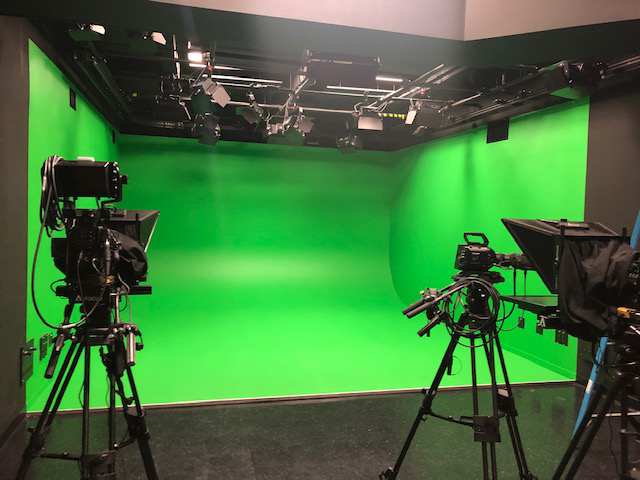Chroma key compositing, or chroma keying, is a cinematic special effects and post-production technique for superimposing multiple images or movies. In Chromaki Studio, the lighting is portable, ceiling and ambient, and in this sense, it is of high quality. In addition, the environment of Chromaki studio should also be acoustic.
Chromakey technique is the process of removing a certain color from an image and allowing that part to be replaced by another image. This color can be any fixed color, usually green or sometimes blue is used in studiochromaki. Chroma keying can also be used literally as a verb to remove a fixed color from an image. This means that the sentences “I used a chroma key in the video” and “I chroma keyed this video” are both correct. This technique can also be simply referred to as “keying” or “keying”.
History of Chromaki
Previously, double exposure was used to introduce elements into the scene that were not present in the original exposure. This was done using black curtains, which are now used as green screens. George Albert Smith first used this method in 1898. In 1903, in The Great Train Robbery by Edwin S. Porter used double exposures to add background scenes to windows that were black when filming on set.
In order for the figures in one exposure to actually move against an alternate background in another, a travel matte was needed to block out the correct part of the background in each frame. In 1918 Frank Williams patented a portable matte method, again based on the use of a black background. This technique was used in many films such as The Invisible Man. In the 1920s, Walt Disney used a white background to include human actors with cartoon characters and backgrounds in his Alice comedies.
It was said that green or blue curtains are used in chromaki; But what is the reason?
Green and blue may be the most common chrome colors, but they are not the only options. Technically, any solid color can be used as a background. Red, purple, orange, brown, any other fixed color can be other color options for chroma curtains. The reason for using more green and blue is that there is neither green nor blue in the color of human skin, and in fact these two colors have the greatest color contrast with human skin.
But there are other reasons for using green and blue. Greens and blues have a higher luminance than other colors, meaning they naturally register brighter on digital cameras. There are a number of small differences between green screen and blue screen, but for the most part, they can be used interchangeably.
But what color is used when? The most important thing to keep in mind when choosing your key color is to avoid overlapping subjects in your frame that you don’t want to remove. For example, if your subject is wearing a green shirt, use blue instead of green, unless you want their shirt to disappear with the background.
How does a chroma key work?
Proper chroma technique may seem daunting from a distance, but it’s actually one of the easiest VFX techniques. The simplicity of the key effect does not mean that it does not require a fair amount of technique and skill to perform well. Its implementation must be done by an expert and experienced person.
One of the first techniques was called the sodium vapor process, which was originally developed for Disney’s Mary Poppins. This technique was an innovative way to remove the shiny edges.
Chromaki technique can be used to some extent by allocating minimal time, but it requires more time and precision to prepare a clean and professional version. In general, it may be assumed that the particular color used is the most important point. In fact, it is the green screen lighting that determines the quality of the effect.
The importance of lighting
The biggest challenge when setting up a blue screen or green screen is lighting and avoiding shadows. A shadow shows itself to the camera as a darker color and may cause problems to replace. This can sometimes be seen in low-budget or live shows. The materials used affect the quality and level of uniform illumination. Materials that are shiny create a lower final quality than those that are not shiny. A glossy surface has areas that reflect light and appear pale, while other areas may be darkened. A matte surface will diffuse reflected light and have a more uniform color spectrum.
Another challenge for blue screen or green screen is proper camera exposure. Under or over exposure of a colored background can result in poor saturation levels. In the case of video cameras, low-light images can also have high noise. The background should be bright enough for the camera to create a bright and saturated image.
Summary
As stated before, in the chroma technique, there are various things and factors, including camera, lighting, chroma screen, acoustic environment, professional editing, etc., which affect the final quality of the output file. they put Jayna Studio, by using expert technicians and using new materials, tries to provide the best Roji delivered in this work and put customer satisfaction at the top of her work.





